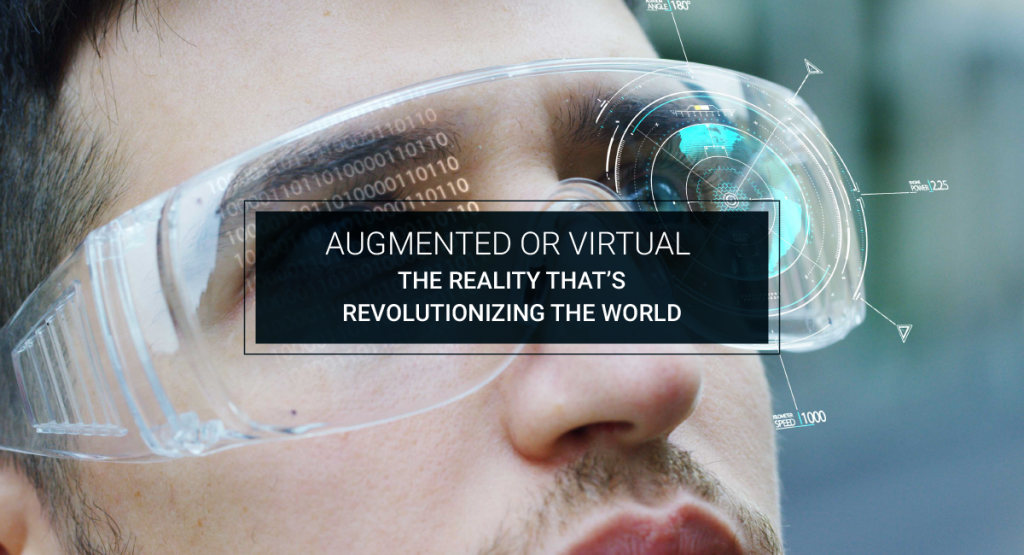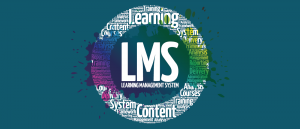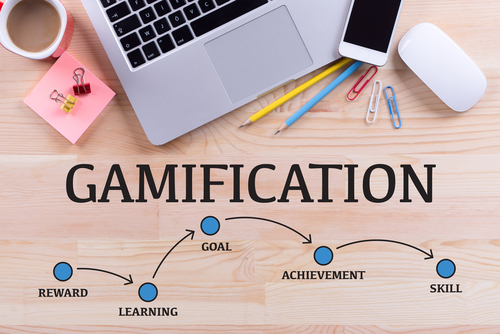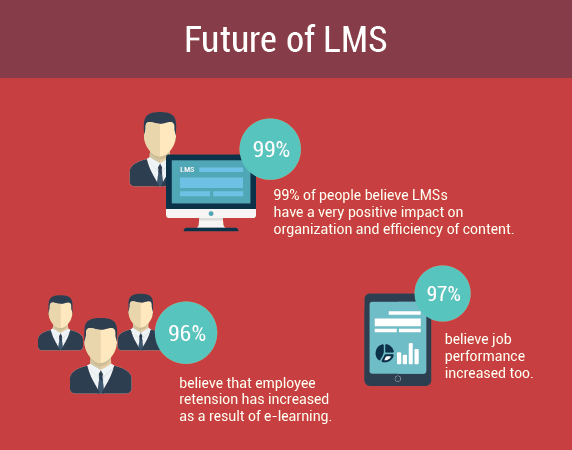Category: Education
How Is Augmented Reality Revolutionizing Education Industry?
Augmented reality is the latest breakthrough technology in the digital space. It has been almost half a century from when the concept of Augmented Reality first appeared in 1968, and as Augmented Reality (AR) is penetrating deeper, its uses continue to increase.
By 2022, worldwide shipments of smart glasses are estimated to reach 32.7 million units. And by 2025, the global augmented reality market is anticipated to grow noticeably to about 198 billion U.S. dollars. With such significant growth, it makes sense to consider how AR can benefit our daily lives. In this blog, we will discuss its impact on the education sector in particular. Let’s begin by understanding what AR is.
Read More:
What is Augmented Reality?
Augmented Reality is the bridge that connects the real world with the virtual world. Its popularity is growing rapidly in every industry from social media filters to surgical procedures. As the word augment suggests, AR enhances what we hear, see and feel. It has categories based on various technologies. Some of those categories are marker-based AR, markerless AR, projection-based AR, and superimposed AR. This makes AR useful for various industries.
There are various industries such as public safety, tourism services, entertainment and so on that are leveraging AR. For example, AR aids the automotive industry by assisting with various parameters such as navigation and speed. It helps people not to lose focus while driving because the application can be projected from a console on the glass which only the driver can see. In Healthcare, there are numerous AR applications that support the video platform and can project augmented hands on the patient. Wherever the surgery is taking place, a senior surgeon can guide a beginner in his surgery.
With many more industries benefiting from AR, let’s see how the education industry is revolutionizing with AR.
The Role of Augmented Reality in Education
AR is set to revamp the world’s conventional learning model. It can bring about a positive change in the location and timing of classes and make learning more engaging. Today’s learning process is becoming much more tuned to bring in the elements of interaction and creativity. By providing visual representations, AR helps students acquire, process, and remember information. Thereby, it helps them to test out their knowledge in practice.
AR technology has also helped students to learn and understand their surroundings. The British Museum has already begun using AR technology to help students understand certain displays. It has proved useful in providing students practical knowledge of subjects such as math or science. Let us look into a few more benefits of AR in the educational sector.
1. Edutainment versus Education
AR makes lessons fun learning. Today’s generation is not a chalk and board generation. Studies reveal that students are easily bored with standardized methods of teaching. The reality is that students tend to remember what they see more than what they learn by rote. AR takes them to the next level by helping them not just to see, but also experience and participate. As a result, AR delivers a positive impact on the students by giving them edutainment.
2. Simplify Complex subjects and Exemplify Abstract Concepts
AR breathes life into complex subjects that students are expected to learn. It can bring added creativity, interactivity and engagement to complex and abstract subjects. It simplifies the learning process. Both the teachers and the students likewise can thus take control of the educational process through AR.
Each student’s level of understanding and the pace of learning differs. Certain AR apps allow you to create personalized learning materials. Such apps allow the tutor to create content for the individual needs of each student. This way, students will get to learn complex subjects quickly and easily.
3. AR-Enabled homework
AR can also help students do their assignments and homework better. The fact that today’s generation is tech-savvy can be harnessed to promote education in a way that will appeal to the students.
AR emphasizes important concepts. By making images and information “pop out” of a textbook, AR can break the boundaries of textbook learning, which has been sidelined as boring and tedious and make it interactive and absorbing.
4. Use what they already have
According to the Pew Research Center, 95% of teenagers have access to smartphones. It makes sense to use this to their advantage in education as well. Neither parents nor teachers have to spend extra dollars on buying gadgets for AR learning. The AR app on an existing smartphone is all that is required for interactive learning.
5. Practical Knowledge at AR Labs
For various reasons, schools may choose to limit the scope of practical demonstrations. This is another fact that will change through the use of AR technology. With AR, students can perform practical experiments without the need of the physical lab. This is extremely helpful for professional courses. Students can also gain knowledge about safety procedures and potential hazards in the lab.
Augmented Reality is the Real Future of Education
According to a survey on the impact of interactive technology on marketing students, it is said that 87% were likely to attend the class, 72% were likely to participate and 70% students said that they improved their understanding of specific concepts. If this is true with interactive technology, how much more of an impact would AR have on the student’s attendance, participation, and understanding?
The children of millennials who are born between 2010 and 2025 are called Generation Alpha, which is considered the most technology-infused. AR education is poised to be the norm rather than the exception. According to the forecast, the AR market is expected to reach $60.55 billion by 2023, growing at a CAGR of 40.29%. Undeniably, AR is the real future of education.
Watch more on how Augmented Reality is creating an impact on the Education Industry.
This video is made using InVideo.io
Fingent is on a go, to revolutionize education sectors with AR technology. With various education application platforms, Fingent is already helping organizations create effective collaboration between students and teachers. To know more about how Fingent can help you provide an effective and efficient learning ecosystem with emerging and trending technologies, get in touch with our experts today!
Stay up to date on what's new

Featured Blogs
Stay up to date on
what's new



Talk To Our Experts
Impact of Blockchain on Education.
Through its tenets of decentralization, transparency, and security, Blockchain has created a new type of internet. It has radicalized the way transactions occur and continues to make great strides in virtually every industry imaginable. Although best known for Bitcoin and Cryptocurrencies, the scope of Blockchain technology doesn’t end there by any means. It has found application in Finance, Healthcare, Real Estate, and many more industries.
Related Reading: Check out these digital innovations that can help you conquer business competitions of 2020.
In this blog, we will discuss how blockchain technology can have a significant impact on Education.
What Is Blockchain And How Is It Creating an Impact?
The word blockchain comes from the core principles of this technology, where secure blocks of data are bound together in chains using cryptographic principles. The record or ledger of data is time-stamped and immutable and is managed not by a single authority but by a cluster of computers. This enables a verifiable and decentralized record of transactions between two people.
What makes blockchain unstoppable is that this record is public and distributed between many computers called nodes. This allows for validation of the data from all the computers in the network, making it open and transparent, at the same time ensuring that no single entity controls the flow of information or transactions. A vital aspect of this information flow is that digital information can never be copied, only distributed. This makes the blockchain technology a fortified channel for information flow.
Let us look at a few reasons why blockchain technology is becoming one of the most impactful technologies today.
1. Unmatched Security
Transaction verification is one of the key aspects of blockchain technology. A transaction must be requested through a wallet and sent to all the computers in a blockchain network. Each of these nodes or computers must verify the transaction against a set of predetermined rules in that network. The information is then stored in a block and encrypted with a hash. Once this hash is verified by the nodes, the information stored in that block is permanent, immutable and secure. Any alterations to the data by hackers ultimately alter the hash and the entire chain of transactions linked to the hash. This means that the information cannot be altered or misused by anyone. Another added layer of security is Public-key cryptography, where there are two keys – a public key, which others can know and a private key exclusively for the owner. This way every transaction is secure and critical information required by financial services, governments, and other entities are protected.
2. Better Transparency
Blockchain technology makes transaction histories transparent. Being a type of distributed ledger, the nature of the blockchain technology permits changes to be made only through the consensus of all network participants who share the same documentation. Even a single change in the transaction record would mean that all subsequent records will have to be altered. The change will also require the collusion of everyone in the network and that means everyone is aware of any change. This ensures transparency and places a high level of accountability for everyone who handles the document. The transaction history also provides an audit trail of where the information originated from, and every instance of when transactions occurred and changes were made. This helps in ensuring the authenticity of the assets and prevention of fraud.
3. Increased Cost and Time Efficiencies
One of the main reasons for time and cost efficiencies with blockchain is that it cuts out the need for third-party mediation. Instead of relying on third-party intermediaries for verification and the movement of information, blockchain uses cryptology to enable direct transactions between two parties. Proving the authenticity of ownership of an asset is done through the blockchain and the nodes in the network instead of the time-consuming process of knocking on the doors of central authorities or other intermediaries. Recordkeeping through a single ledger also cuts out the clutter of error-prone manual processes, thereby saving time and money.
Related Reading: Read on to know how Blockchain is reshaping the supply chain industry.
Blockchain Revolutionizes Education
As discussed, security, transparency and time and cost efficiencies are some of the reasons why blockchain has found application across industries. In the words of Don and Alex Tapscott, authors of Blockchain Revolution (2016): “The blockchain is an incorruptible digital ledger of economic transactions that can be programmed to record not just financial transactions but virtually everything of value.”
Now let’s see how this applies in the field of education.
1. Student E-portfolio
The importance of credentialing in the field of education has become more apparent in this day and age where holding a degree just doesn’t cut it anymore. Employers want to see evidence of what the student is capable of outside academic goals like is obtaining a degree. Speaking about the need for universities to keep up with this demand, David Schejbal, the Vice President and Chief of Digital Learning of Marquette University, says: “What we really need is a broad set of credentials that are able to provide the kind of just-in-time learning that many folks need throughout their lives. We need transcripts that reflect transcripts that help students document in some verifiable way, what they’ve demonstrated they can do.”
Blockchain makes this possible by providing secure and verified credentialing and record keeping of student information. This is provided as a model where all of a student’s competency indicators are collected and shared securely. These indicators will include badges, certificates, letters of recommendations, citations and other details which add to the credentials of a student.
The Ledger Project is an interesting concept that looks ahead at a revolutionized education system in the year 2026. In this scenario, all your learning credentials are tracked on “Edublocks” through blockchain technology. This will help employers match their exact needs with the right student candidate and also help students obtain scholarships and funding for their education.
Blockchain is finding a practical use in this context, even today as major players like Sony Global Education with its use of blockchain to securely share student records and MIT with an open standard for verifiable digital records.
2. Cost Savings on Courseware and Research material
Another area where blockchain can be useful in education is in making courseware accessible and affordable. One way is in cutting out intermediary fees in the purchase of software. EBooks, for example, can be fitted with blockchain code and shared through the network. This will eliminate the fees charged by portals like Amazon and credit card fees. The books could be accessed straight from the authors themselves. This would mean major savings for both students and authors. Video tutorials and much more can be accessed this way.
3. Copyright And Digital Rights Protection
The unmatched security provided by Blockchain is an asset when it comes to protecting intellectual property. WIPO’s Patent Cooperation Treaty (PCT) passed a record-breaking filing mark in 2018 with 253,000 patent applications. This was an increase of 3.9% in 2017. The amount of intellectual property being created is extraordinary and many researchers, academics and students are contributing to the innovation pool daily. Blockchain will help them create, share and control their intellectual property in the way that they want. San Jose State University is an example of how blockchain is being used to create “community content repositories”. With its Library 2.0 movement, the university is enabling effective curation of digital contents and protection of digital rights.
Related Reading: Check out how Fingent helped a non-profit organization digitize the education system.
There are many other ways in which blockchain technology is influencing the Education sector. Reach out to us and find out how this can be leveraged for your company.
Stay up to date on what's new

Featured Blogs
Stay up to date on
what's new



Talk To Our Experts
Businesses increasingly rely on the capabilities of their workforce to gain an edge over the competition in the complex business landscape. Pressure on Internal Learning & Development teams have increased immensely to train under-skilled human resources to make them more competitive and relevant to changing business trends. With rising shortage of talent, hiring processes are failing to meet the talent expectations of an organization. As per a study conducted by CareerBuilder, 49% of employers have made up their mind to hire people who are underskilled and train them to bring them up to be productive resources who adds significant value to the organization’s growth. Even though this is an excellent opportunity for L&D departments, the cost for such training programs are always a matter of concern.
With the growing popularity of eLearning, it has been seen in many cases that shifting to online training makes training very effective.
- According to a report by Judith B. Strother that had findings of Hall and LeCavalier, some of the big shots were able to cut their training costs tremendously by switching to blended learning. One of them is Ernst and Young, who cut their training costs by 35% (An Assessment of the Effectiveness of e-learning in Corporate Training Programs)
- The same report also described how IBM was able to cut almost $200 million after moving to online corporate training.
So where should we start off?
Assess your Requirement
It’s important to understand what your organizational goals are from a training perspective. You can use employee surveys and quizzes to create a training program that can be effective in developing employee capabilities as per their requirement. Furthermore, a retrospective on training feedback will help you fine-tune your training plan.
Using the results from employee surveys and quizzes, you can narrow down those areas where training can bring your organization closer to its strategic goals.
Program Streamlining
As employees are expected to juggle multiple responsibilities, there are many areas where they may need to be trained on. Some programs can be redundant and thus avoided entirely. Categorizing your training modules as per their priority can make your programs more cost-effective. Based on their priority, you can decide on when and how much to invest in them. This is useful, especially where your training costs are charged per training program.
Prioritizing the development areas that will help your organization achieve its vision will not only let you use your resource efficiently but also drastically reduce the risk of investing in the wrong training program.
Choose the Right Trainer
The right trainer can reduce costs while providing the necessary training that your team needs. Sometimes the top gun in the market may turn out to be the wrong choice for your organization. Each training vendor will have to be carefully assessed to suit your organization’s priority and requirement. If you are looking to develop your team’s soft skills or a general skill area, you don’t really have to invest a premium. However, when it comes to training your team on a specialized skill, you might want to consider vendors who are known for their quality of training in that specific skill set.
Transforming learning and development [Source: Onlignment]Talent Management Strategy
A general market study shows that over 70% of corporations having over 10,000 employees are focussed on setting up a Learning Management Solution (LMS). And today, almost all LMS vendors have a Talent Management system bundled along. From the market research, it has been noticed that companies having a Talent Management system from the same vendors as their LMS are getting almost four times returns from those who are buying them from a separate vendor.
An eLearning software not only saves my time and energy to train someone on a specific skill set but also allows me to reuse a set curriculum/course with multiple candidates. The only effort required is to maintain/update the learning material when required. A good eLearning system will help me track my team’s progress with the training and at the same time help the employees map their training with their career path.
Reducing cost in the overall functioning of an organization is a part of everyone’s priority list. Developing my team’s skill along with cutting cost is a deal I’m willing to take any day!
Stay up to date on what's new

Featured Blogs
Stay up to date on
what's new



Talk To Our Experts
In today’s tech-neutral age, knowledge and skills are the key sources of competitive advantage. Smart enterprises institute Learning Management Systems (LMS) to harness and organize the corpus of knowledge available within its ecosystem.
However, the success of such initiatives depends not merely on setting up a Learning Management System. Success rather depends on ensuring that the system is compatible with the enterprise requirements and scalable to match the ever-changing requirements in an extremely fluid business environment.
Learning Management Systems traces its origin in delivering eLearning courses to the workforce through the internet and company intranets, in compliance with the established eLearning standards such as AICC and SCORM standards. However, the nature and scope of LMS have evolved considerably since then. While the exact nature of the LMS may vary, depending on enterprise requirements, successful LMS of today invariably facilitates seamless integration of the physical and virtual classrooms, promotes social learning, and fills in critical gaps in learning. The best LMS are scalable, portable, promotes gamification, and makes managing talent seamless across the enterprise.
Integrated Virtual Classrooms
An effective Learning management System co-opts virtual classrooms, including “live” classrooms, to deliver the power of training and education to anyone, at any time, and any place. Today’s LMS include multimedia-rich virtual classroom content or have ready-to-use APIs, to co-opt the most popular classrooms into its fold, with just a few simple clicks.
Any good LMS offers APIs to connect with the millions of courses and lectures available in popular online portals such as the eDX, and even YouTube.
Promotion of Social Learning
An effective LMS goes beyond formal training and promotes social learning. The conventional method of imparting learning is storing content in a repository and creating access rules around it. Social learning goes a step ahead, to offer users the power to create content, and thereby exchange anecdotes and real-world experiences. The learners collaborate with each other in real time, creating an interactive and participatory learning experience, replicating the feel and experience of a physical classroom. From the enterprise perspective, such an approach furthers the creation of a sustainable pool of knowledge and makes very effective training.
Truly successful Learning Management Systems also tap into gamification, or staring up a friendly competition among learners, to increase engagement. Some of the most common gamification options to make the course more engaging include badges, leaderboards, levels and more. Another option is a small token prize for the learners who do exceptionally well.
Filling in the Gaps
A robust Learning Content Management System automates the task of curriculum management. It scours the training material, syncs with the curriculum, and fills critical gaps in knowledge or information. It also updates the existing content, removing obsolete or outdated information, and updating the content to reflect real-time information, on the basis of latest research, statistics, and other findings. Of course, the caveat is that any LMS is only as effective and relevant as the content and rules fed into it in the first place.
A Flexible Learning Approach
A Learning Management System empowers learners to structure and assemble their own learning. An effective LMS is flexible and modular to allow learners full of the required learning materials and resources to form a curriculum customized to their learning needs and suited to their learning styles.
A key element of flexibility is portability. In today’s extremely fluid business environment, where enterprises have to go where business takes them rather than wait for business o come to their office, a portable cloud-based LMS, accessible through mobile front-end apps is the way forward. For instance, offering training sessions on a tablet with the option to follow us using a desktop computer, with seamless sync between the two, helps the learning progress whenever he is free, such as when commuting to the office.
The best LMS is flexible enough to offer training content at multiple levels, and in multiple formats. Smart LMS also offers the option to support training in multiple languages, a key requirement in today’s hyper-globalized world.
Effective Administration of Training Requirements
Today’s LMS bridges the gap between the classroom and eLearning environment. It offers an effective medium to sync between the two, enabling trainees to extract the best of both worlds. It facilitates easy management of complex and dynamic resources, including training inventory, trainer and external vendors, training rooms and venues. The LMS takes over and automates the vexatious tasks such as coordinating several training programmes, planning and administering training sessions, tracking pre-training and post-training feedback, and compiling training materials. The LMS also makes effective follow up through email and push notifications, logs attendance, and more. By these processes, the platform reduces the administrative drags characteristically associated with such processes.
Scalability
The best Learning Content Management System platforms are scalable, granular and flexible. A scalable platform enables starting off with a manageable base, fine-tuning the system, and growing it organically.
Starting small has its advantages, in being able to check if the implemented programmes actually benefit or meet the intended outcomes, and if the targeted recipients are indeed receptive to the initiative. Creating pilot programmes to validate the hypothesis and assumption is a fundamental time-tested practice to avoid failure. For instance, once this process is completed it would be ruinous to discover the selected platform crashes under the pressure of 10,000+ learners all over the world.
Starting small, however, should not become a limitation or a stumbling block for future growth. A good LMS platform should be capable of managing a large amount of data easily, accessibility for a large number of users to the system at the same time, and allow them to connect from all over the world without delays.
A sound and robust LMS is a key asset in today’s knowledge organizations. By facilitating the learning and training requirements, it equips the workforce to face the emerging challenges, and focus their energies on their core competence.
Stay up to date on what's new

Featured Blogs
Stay up to date on
what's new



Talk To Our Experts
Learning is highly evolving in all facets of life and so are the systems that provide learning opportunities. The definite way to address the changing and growing requirements of employees in the organization is to provide them a responsive Learning Management System that will offer the right flexibility and accessibility of the learning material on multiple devices without loss of information or tracking. The continuous learning keeps them involved, motivated and helps to retain the employees in the organization. However, before your organization jumps into implementing a responsive LMS, it is important to put some crucial forethought for selecting the right one that suits the preference of your employees.
Understanding devices
You will need to understand and evaluate the various devices that are available and will be used most frequently as a learning source for your employees.There are numerous devices available today with various screen sizes. Pre-identifying these target devices helps in understanding the compatibility of the software and achieving better productivity. Lock the primary ones that you need to address and check if the responsive LMS works well, and adapts from landscape to portrait mode and back. Also, the user information should be tracked effortlessly so that the data isn’t lost when they switch between devices.
Easy Navigation
A responsive LMS should utilize the features that each device offers, such as touch, swipe, and scroll in smartphones. A highly intuitive UI with user-friendly approach will definitely make the learning experience more fun and enjoyable. Along with switching of the device resolution and screens, the content should also be formatted to mold into any device dimensions and screen resolutions.
Better Accessibility
Data packs that connect to the internet vary largely on devices and hence you need to consider your content likewise. Choose an LMS system that utilizes HTML5 that helps learners to download and access the learning material offline. Also, keep the bandwidth that each lesson will need in mind and use a cloud-based system that customizes the resolution and bandwidth as per usage.
Safe and Secure
No matter how good a responsive LMS system is, if it doesn’t offer security to user’s information, it simply won’t work. Select an LMS system that can protect and safeguard the personal data of learners. This may include securing email IDs, passwords, phone numbers, and even course content. This can be identified by checking what level of encrypted coding is used by the system and how secure is its server or cloud data storage.
User Interactivity
Responsive LMS system that allows the user to not just access material, but also lets them upload content in the form of pictures, videos, and more will definitely work well. It should have the ability to convert the content into a compatible format that will be streamlined and functional for all device types. Another feature that can enhance a responsive LMS is the addition of social elements. It is a great strategy to make the learners in the organization interact with each other with the help of discussion forums, chat plugins, ratings, and content sharing. It will not only help learners explore more but also help promote the material via their word of mouth.
Support Services
A more engaging and responsive LMS would always require monitoring and support over a static system. Check if you get the right support from the vendor and figure out their turnaround time. If your organization is huge, check if they can offer a dedicated support team on a contract.
A responsive LMS is a sure-shot way to go ahead if all these factors are kept in mind. If you are reading this to seek a vendor, contact us to learn more about the latest trends and practices in developing learning management systems and how these benefit learners and organizations today.
Stay up to date on what's new

Featured Blogs
Stay up to date on
what's new



Talk To Our Experts
Learning Management System or LMS has been a powerful tool used in the Human Resource (HR) and Learning & Development (L&D) departments since decades. This digital system that administers, documents, tracks, and reports activity of each employee grew phenomenally with over ten-billion-dollar of industry spends. Although such learning management content system plays a vital role in updating the employees, the system is touted to be the downfall. The question is whether LMS is really fading into obscurity or is there more than meets the eye.
Where Does the Problem Lie?
LMS is a total desktop solution that offers not just e-learning solution, but even manage enrollments, instructor-led training, offer classroom resources and keep track of individual performances as per compliances. After the digital boom, LMS systems stayed their course and the rest of the world evolved around them. The underlying problem was that the system got rigid while the learning ecosystem changed completely.
Need to Rehash
With every changing trend, Learning Management System will have to adapt and modify to ensure that it doesn’t go out of the window. The lack of integration and less degree of customization options has until now hampered the growth of LMS market. The idea is to consider the dramatic changes that have occurred and create an innovative, future-proof LMS.
How to Update?
LMS should be no more limited to a desktop and should be provided on multiple devices for better accessibility. This includes seamless learning via a smartphone, laptop, and tablet in addition to the desktop. The option to provide a mobile learning experience with short, manageable lessons will increase engagement. Another idea to proactively change is adding a customized system that offers a personal touch with respect to the learner’s need. Gamification of the entire content also helps in providing a better learning experience for the learners.
There are a lot of data generated via LMS that should be used to devise better strategies by the L&D department. The design of LMS should not be daunting and should have a user-friendly UI that motivates them to learn more. A well-planned design enhanced an automatic workflow is a perfect way to improve productivity, efficiency, and engage the employees to get involved. Adding some lucrative tools that are ancillary to the cause of LMS can add some weight to its worth. Also, as per its name, learning content management system should not just focus on providing learning experience but also offer all-around learning management.
How Will Learning Management System Benefit From This Change?
With cloud-based LMS’s on the rise and change in various tools that rehash the system completely, the growth of the LMS market is evident. The many advantages that it will offer are easy use, cost-efficiency, accessibility, flexibility, multi-platform support, and personalization for a successful L&D strategy.
The Future is Bright
According to a new research by Zion Market Research, LMS market is growing at a steady rate and is valued at around USD 5.19 billion in 2016 with the scope of reaching USD 19.05 billion in 2022 with a CAGR of almost 24%. The major factor for such a prediction is the requirement of information and high-quality education to stay in the market. Learning Management System that evolves with time and offers cost-effective learning in an efficient way can do very well.
With growing trend, everything is replaced or changed and Learning Management System is no different. But continuous evolution and significant changes that will connect and engage all types of users is a definite way of keeping the employees sharp. We offer such powerful e-learning tools that will enhance the scope of your company and provide an incredible way to educate your staff.
Stay up to date on what's new

Featured Blogs
Stay up to date on
what's new



Talk To Our Experts
Learning Management Systems (LMS) have been in use in the education industry for quite some time now. They basically make use of software to administer, track and monitor the functioning of e-learning courses. Schools, colleges, and universities have been using LMSs to provide online courses that compliment traditional on-campus courses. These days LMS software is also used by Corporate Talent and Development (T&D) departments, to provide online training to employees and to automate record-keeping. According to findings by E Learning Industry, the LMS industry is expected to be worth over $7 billion by 2018.
Over the past few years, the use of LMSs among various industries have increased and for the same reason they have undergone their share of evolutions and changes as well. As is the case with any kind of technology, old systems can no longer serve the purpose of educational organizations today and hence, they have to evolve.
Learning Management Systems are not simple pieces of software anymore. Software analysts have done considerable research about the evolving LMS industry and have identified several trends. Let’s take a look at some of the major trends in the industry this year;
- Open Software-as-a-Service (SaaS) Solutions – Cloud-based SaaS solutions have always allowed LMSs to be easily set up and used, thanks to their established standards and ease of access. But even such service delivery models have drawbacks. They may allow for easy access and setting up but they allow for only very minimal customization. Open source platforms, on the other hand, may offer customization capabilities but they may incur expenses for frequent administration and downtime. A delivery model that utilizes the best of both worlds is one that is Open Saas, with substantially reduced setup costs and customization as well. This year we will likely see the rise of Open SaaS solutions that can bring down the overall costs of ownership and also provide service delivery to fit the unique needs of different businesses.
- Gamification – Gamification, that is, the use of gaming elements and mechanics beyond the traditional gaming experience and integrating it with learning and education systems, is something that has proven to increase retention and learning speed among students. For the same reason, as a general trend in the education industry, we’ll be seeing an increase in this technique. In LMS, we are likely to see the increased integration of gamification with it and furthermore, improvements in the interface and portal design as well. By increasing engagement through gamification, LMSs seek to allow both students and employees approach their learning from a strategic point of view, with time management skills and a point or reward-based incentive systems. It provides a lot more than entertainment, and aims to increase the overall learning potential through incentivized processes and behaviors.
- Socializing – We are all familiar with the effect that social networks have on our people. I mean, they have been nothing short of successful in luring an entire generation into the habit of sharing information and scheduling stuff through the internet. Every single day, people get into their own social circles online and see what their counterparts are up to, share their own little world with them and literally keep themselves updated on the happenings of each passing day. Such being their effect, on the mere matters of everyday life, why not leverage them for learning and training or education purposes as well?
Indeed. They are made use of by LMSs in getting across learning material to users and allowing them to share knowledge within their own social circles. LMSs seek to utilize the comfort and familiarity that users experience through the social media channels, and encourage them to share and learn in a comprehensive way. With the increasing popularity of this trend, it would only be a matter of time before LMSs start delivering personalized and adaptive training and talent management services to users through these social networking portals. - Blended learning – Again, a general trend that we will continue to see trending in the education industry this year. Blended learning also helps businesses in training and improving the skills of their employees as well. By integrating the digital and practical learning experiences, it augments classroom learning, with supplementary learning materials, advanced scheduling capabilities and the like, and provides the users with much needed hands-on experience. LMSs facilitate these practices and make way for more effective learning sessions, be it for students or employees of an organization. It also makes scheduling tests and exams much easier, as all of this can be organized and monitored through a single portal. What’s more, it keeps the overall costs of training and development well within the budget. With many such benefits, this method has already proven to be successful, which is why we’ll be seeing more of this in the coming years.
- Increased business utility – The use of LMSs in business organizations had been on for some time now, although it hadn’t quite gained momentum. This year, it is definitely going to increase, as businesses have realized that investing in education and personal development of their employees, benefits not just the employees alone, but almost all areas of their business. From customer engagement to management, LMSs can help in managing all important aspects. Training the employees, can reduce employee turnover and improve morale. Customers and business partners can also benefit from LMSs by making use of the tracking and information dissemination capabilities. They can even help you devise your own e-commerce strategy or customer service portal.
Learning Management Systems have come a long way from the time they were introduced into the industrial landscape. They have become more than just complimentary educational programs. This year definitely looks like a revolutionary one for LMSs, as it is likely to take over the business field as well. There can be many more trends in the LMS industry this year. What do you think we can add on to this list? Let us know in the comments below.
Source: Software Advice
Stay up to date on what's new

Featured Blogs
Stay up to date on
what's new



Talk To Our Experts
The New Media Consortium (NMC) Horizon report of 2015, while showing projections on the year’s new K-12 technologies, opened with a quote by science fiction author William Gibson; “The future is already here – it’s just not very evenly distributed.”
This is indeed true in the field of education, as advanced technologies of tomorrow are being used in many schools and institutions across the world, but they are yet to be accepted on a wider scale. Many new technologies, like wearables, for instance, play an important role in transforming classroom learning experience these days, but has it become mainstream?
Not yet, but we’re getting there. It is, of course, the latest trends in the industry today, that become ways of life tomorrow.
The report intends to throw light on some of the major technology trends shaping the educational sector, and guides decision-makers of educational technology, in making their way through the complex and dynamic environment.
On that note, let’s take a look at some of these major technological trends in education today.
Automation
Many education experts second the chances of automation becoming an essential aspect of content creation for teaching as well as processing. Content providers are likely to use improved automated solutions for creating new courses and content for learning materials, which would result in an immense saving of time and efforts involved in conventional processes. Coursework routines, like tests and exercises, can all be created automatically with the help of tools that can scan the course content and identify the important elements that need to be tested. Courses can also be optimized according to the requirements of different users and their skills and knowledge level. Algorithmic solutions will be used by different automation tools in offering personalized course content.
Flipped learning
The traditional method of learning involved students going to classrooms and attending lectures after which they return home to complete exercises and assignments related to the day’s lessons. Even though this model of learning has been proved to be super successful and has served generations of students pretty well, education experts think it’s time to move to a more advanced mode of education, involving collaboration and hands-on learning: flipped learning.
Instead of completing assignments at home, students in a flipped classroom would spend their time learning the next day’s lessons and listening to prerecorded lectures online. In school the next day, they would do exercises that would have been considered as homework traditionally. As a result, students have the opportunity to apply their knowledge in a collaborative space where they can get consistent feedback and guidance from their teachers. It would also allow teachers to conduct more innovative in-class activities that would encourage interaction between the students.
Augmented learning
Augmented reality devices, like the Apple watch and Google glass, are already being used in a number of industries and undoubtedly, they will become common elements of our daily lives in coming years. The education industry is one of the biggest gainers of augmented reality in terms of offering adaptive learning environments to users. Experts say that the market for augmented reality is likely to reach a whopping 200 million users in just 3 years. With augmented reality, learners will be able to access environments with action-based functionalities in real life using GPS tracking facilities, engaging them in more interactive learning experiences. Devices like the Oculus Rift can also help in developing interactive courses.
Watch out how augmented reality impacts the education industry.
This video is made using InVideo.io
Gamification
Experts have been advocating the benefits of applying game dynamics onto non-gaming contexts and motivating people to achieve their goals for a long time. Unfortunately, decision-makers in the education industry have always been skeptical about it. But the good news is, it’s slowly making its way into the industry now. With gamification, user engagement can be improved by a large margin with the help of learning materials. Experts say that integrating gamification with education can boost learners’ motivation by up to a 90% recall rate. It’s an obvious benefit as the more the learners assume active roles in knowledge reception, the more they feel part of the learning environment which automatically improves their chances of remembering it.
Personalization
Personalization has been an ongoing trend in the education industry for quite some time and it is more of an implication of the other trends. In future, the growth of personalization will increase across all levels of learning. With the help of big data and insights derived from it, learning will become more personal than ever, carefully addressing the requirements of each individual rather than groups. All elements in learning, from learning materials and learning tools to learning environments and course program, will be tailor-made to suit each individual, engaging them and motivating them to achieve best results in short time frames.
It is pretty evident that the coming years will be all about personalization and improving learners’ interests, allowing them to choose their own paths and adjusting their course timings. In many ways, it will be a revolutionary period as well, as it is likely to change our approach towards learning and education on the whole.
Have an interesting idea for the school nearby and its students/faculty? We can transform your ideas into reality, mixing it with a lot of cutting-edge technologies. For more details, contact our educational sector programming experts.
Stay up to date on what's new

Featured Blogs
Stay up to date on
what's new



Talk To Our Experts
According to Mashable, Australian schools from now on, are going to replace History and Geography with coding as per their new digital technologies curriculum. As reported by The Australian, this new curriculum ensures that 21st-century coding is taught in primary schools from year 5 and programming is taught from year 7. This is as part of Australia’s new move to focus on STEM (Science, Technology, Engineering and Math) subjects at a primary level. Education minister Christopher Pyne made this last act right before he became Minister for Industry, Innovation and Science.
Pyne said, “High-quality school STEM education is critically important for Australia’s productivity and economy well-being, both now and into the future.”
He also talked about the need to train teachers for this new approach in teaching. Earlier this year, he had mentioned the need to strengthen the country’s skills in science, technology, engineering and maths and also digital skills that are essential for the technology-oriented environment in this 21st century as well.
For this purpose, the Government of Australia will be putting in 12 million Australian dollars into four separate STEM areas. That is, computer coding introduction, innovative maths curriculum development, a site for a P-Tech styled pilot school and summer schools that provide funds for underrepresented students in STEM. Christopher Pyne said, “We know that as computer-driven smart-technology expands into every aspect of our recreational and working lives, there is an ever-growing need for highly skilled workers in this global growth industry. All children will need to understand is computational thinking and how it can contribute to their future.”
Similar successful programs have been run by the United States and the UK as well, both of which had been quite successful. For example, Code.org and “Hour of code” which were implemented in the United States with the help of Google and Microsoft. The UK introduced its curriculum last year. Following their path, the Australian Govt. also seeks to equip its children with the necessary skills to work in a technology-filled world.
Estimates say that up to 75% of the rapidly growing occupations in Australia, are most likely to require excellent skills in Science, Technology, Engineering or Maths, that is the STEM subjects. Such being the importance of technology education, it seems like the right thing to do for Australia. As a matter of fact, it is actually high time that they implemented this concept because, this has been on discussions for quite some time now, especially among Australia’s top technology executives such as Atlassian’s Mike Cannon-Brookes. He said, “Technology education in primary and high school is going to be one of our biggest fails as a country in 20 years time if we don’t fix it and it may already be too late if we don’t move very fast.
If you look at what other countries are doing, we’re miles and miles behind and I think it’s as critical as Maths or English to every single job that’s going to be done in the economy in 20 years time and education takes a long time to flow through.”
With all this, it seems like the world is slowly coming to terms with the fact that technology is not only here to stay, but is bound to improve and that technological disruption is not really a choice, but a way of life. As children get introduced to technology at their young age, they get the chance to adapt themselves to it and will also be skilled enough to survive as technology takes over most industries. With the theoretical knowledge, they will also learn practical side of the Science, Maths and everything in their curriculum that makes technology possible, and thus have a basic understanding of how things work.
Even though this concept has been approved by most people, their Prime Minister, Tony Abbott was not quite supportive of it. He said that he didn’t see the point in teaching primary school children coding and programming.
Stay up to date on what's new

Featured Blogs
Stay up to date on
what's new



Talk To Our Experts
According to a new report by the Global Industry Analysts Inc. the global e-learning market is likely to reach US$107 billion in 2015. Factors driving this growth include increased use of the internet and decreased telecommunication costs.
That is how much technology is influencing the education industry these days. Even in classrooms, the use of technology is on the rise. Another study conducted by Futuresource Consulting, revealed that the global expenditure on technology in classrooms is likely to reach US$19 billion by 2018.
Technology use in classrooms has even led to the evolution of a whole new learning experience knows as flipped learning or blended learning.
That said, here are 3 of the latest technology trends in the education industry this year:
- Flipped learning – This is a kind of a blended learning technique in which students learn content online by watching video lectures etc. usually at home and also do work in class with the teachers like discussing and solving questions etc. The basic idea is to engage the learners inside and outside the classroom and thereby provide a dynamic learning atmosphere. This makes learning more effective and fun. For this purpose, video distribution tools and streaming devices will be used widely and more cloud-based learning systems will come into use.
- Personalized learning – There is a wide variety of learning tools which can be personalized according to the needs of the learners. Various approaches like project-based learning, game-based learning etc. can be used with the learners depending on their learning styles. Moreover, with technology, teachers are now able to track the progress of their students in individual subjects or even lessons and find out the areas in which they might need help. Hence, they can further personalize their teaching.
- Online learning – The online revolution in education was brought about by Massive Open Online Courses (MOOCs). They are free online courses offered by many leading universities across the world. They have been revolutionary in providing students around the world with free and quality education that they can finish anytime and anywhere. They offer courses on a wide range of topics like humanities, business, medicine etc. Usually they let learners take their own time in completing a course, but there are timeframes similar to traditional university courses.
With technology becoming such a huge part of the education industry, more schools have started to adopt the blended learning technique. Classroom technology has almost become inevitable for effective learning. Even mobile based learning techniques are on the rise now. Technology has basically become a necessity as far as the future of education is concerned.
Stay up to date on what's new

Featured Blogs
Stay up to date on
what's new





































































